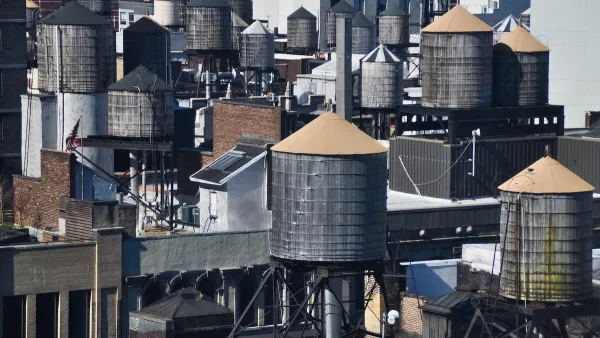California's Governor Jerry Brown unveils his administration's new plan in hopes of finally balancing the state's competing water interests. The cost? $14 billion over a decade.
California's broken water distribution system may finally have a fix, so says Governor Jerry Brown. As reported by The New York Times' Felicity Barringer and Jennifer Medina, "[t]he $14 billion blueprint envisions both the physical and psychological re-engineering of California's plumbing, including the construction of twin 35-mile-long pipelines, each about as wide as a three-lane highway, that would tap river water from a more northerly, less polluted location. The pipelines would deliver the water straight to the conveyances in the south, largely replacing a system that pumps water from the murkier southern part of the 500,000-acre delta, disturbing the fragile ecosystem."
Ever-increasing water withdrawals and levee building have led to what one environmentalist called a "biological meltdown." At the same time, "Decisions in recent years by the federal Fish and Wildlife Service and the courts to ensure there is enough water for fish have led to water delivery cutbacks in drought years." With the majority of stakeholders poorly served by the current situation, there is hope Gov. Brown's new plan will finally justly balance ecological, political, scientific, and industrial needs.
But lacking are details for the new plan. "Although Ann Nothoff, California advocacy director for the Natural Resources Defense Council, is troubled by the lack of detail in the proposal, she believes, "The status quo is unacceptable."
Although key details of the estimated $14 billion plan were missing (ignoring essential elements such as how much water would go through the pipes and when and scientific goals for recovery of endangered and threatened fish), it's clear who will end up paying the tab. "Those who consume water will have to cover the cost of construction; buying land and creating new habitat will fall to the government," write Barringer and Medina.
FULL STORY: California Envisions Fix to Water Distribution

Analysis: Cybertruck Fatality Rate Far Exceeds That of Ford Pinto
The Tesla Cybertruck was recalled seven times last year.

National Parks Layoffs Will Cause Communities to Lose Billions
Thousands of essential park workers were laid off this week, just before the busy spring break season.

Retro-silient?: America’s First “Eco-burb,” The Woodlands Turns 50
A master-planned community north of Houston offers lessons on green infrastructure and resilient design, but falls short of its founder’s lofty affordability and walkability goals.

Test News Post 1
This is a summary

Analysis: Cybertruck Fatality Rate Far Exceeds That of Ford Pinto
The Tesla Cybertruck was recalled seven times last year.

Test News Headline 46
Test for the image on the front page.
Urban Design for Planners 1: Software Tools
This six-course series explores essential urban design concepts using open source software and equips planners with the tools they need to participate fully in the urban design process.
Planning for Universal Design
Learn the tools for implementing Universal Design in planning regulations.
EMC Planning Group, Inc.
Planetizen
Planetizen
Mpact (formerly Rail~Volution)
Great Falls Development Authority, Inc.
HUDs Office of Policy Development and Research
NYU Wagner Graduate School of Public Service


























